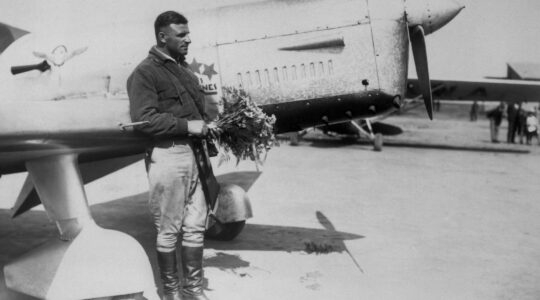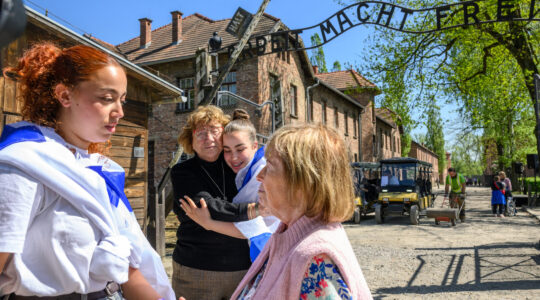BERLIN (JTA) — A new search in Germany for books stolen from Jews during the Third Reich is beginning to bear fruit.
Recently, a man in California who was the only survivor of the Holocaust in his family received a book from Germany that had been dedicated to him by a teacher. The only other things he has from his childhood are a piece of clothing and one family photo, the Deutsche Welle news agency reported.
Last fall, it was announced that 500 books from the library of Jewish department store owners Edith and Georg Tietz had been rediscovered in the city library of Bautzen.
The Initial Check project — dedicated to finding stolen books and their rightful heirs — is a relatively new part of a German government-sponsored search for stolen art coordinated by the Magdeburg-based Lost Art Foundation. For over a year, three provenance researchers have been searching through libraries, starting in the former East German state of Saxony-Anhalt. In all, there are some 6,000 libraries that eventually will be examined by researchers, Uwe Hartmann, head of provenance research at the Lost Art Foundation, told Deutsche Welle.
The successes may not be as sensational as the returns of paintings by famous artists to heirs. But according to a report in Deutsche Welle, the return of a book can be just as meaningful to the family involved, as in the case of the Holocaust survivor from California.
According to Hartmann, the Nazis began confiscating books from Jews in Germany after the Kristallnacht pogrom in November 1938. Some Jews fleeing Germany sold their books and other belongings for far less than they were worth. Other books were looted from homes and collections in Nazi occupied areas during the war.
One source of information for provenance researchers is a list of books kept by the Reichstauschstelle, an office of the interior ministry that was created in the 1920s. The Nazis ultimately used it as a resource, essentially making stolen books available to help restock German libraries that had been damaged in the war.
But for the most part, the researchers rely on help from local librarians, who know the contents of their shelves and have picked up clues over the years.
In addition to books and paintings, the Lost Art foundation is seeking to reconnect musical instruments, furniture, household articles and even cars with their proper heirs.
JTA has documented Jewish history in real-time for over a century. Keep our journalism strong by joining us in supporting independent, award-winning reporting.





